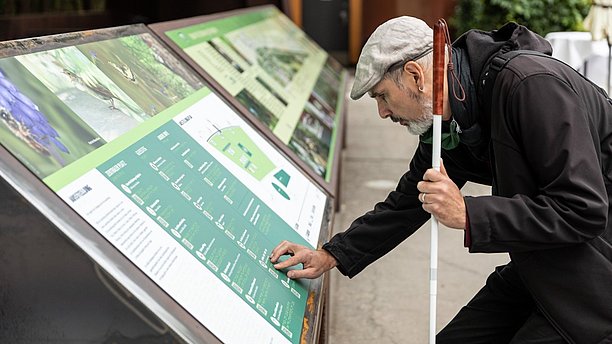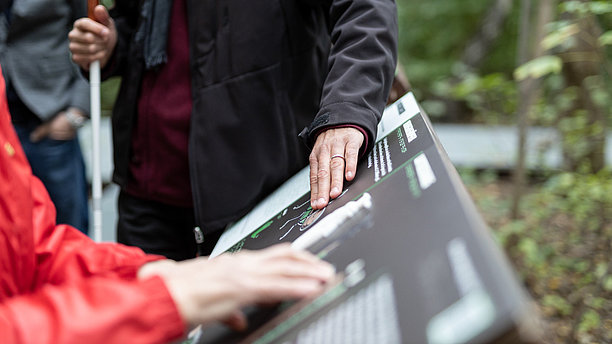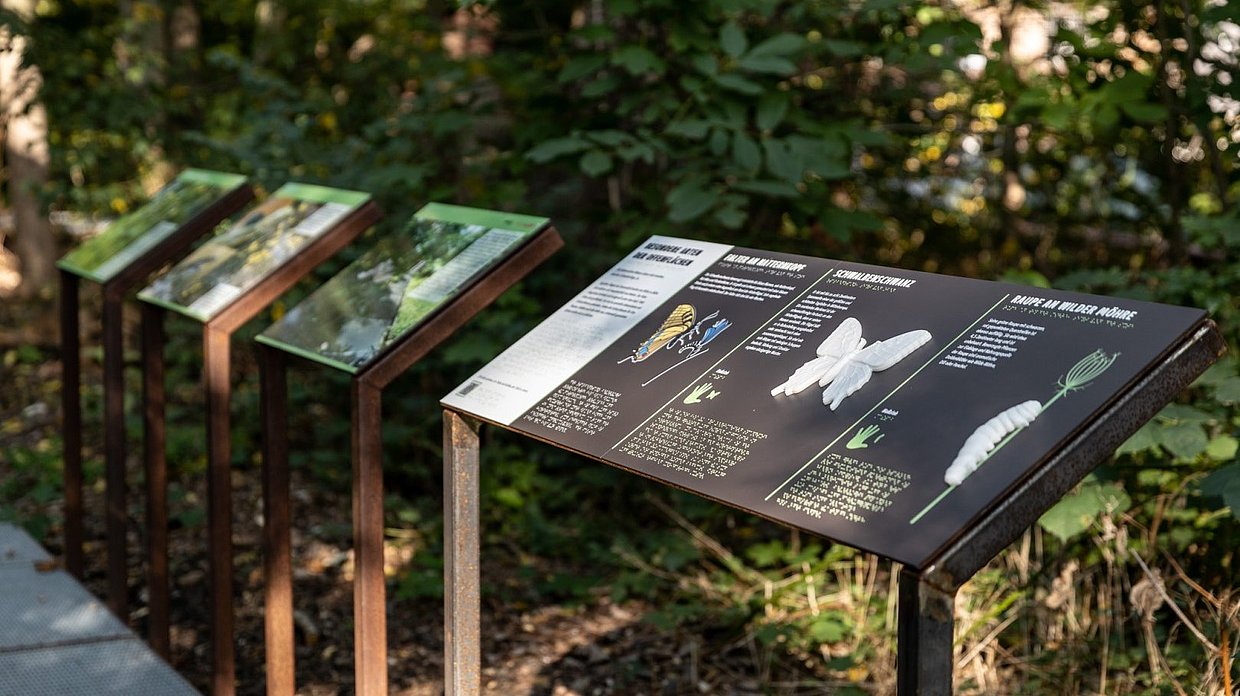The open-air exhibition "Trailblazing Nature", which opened in 2017, shows the unusual history of the Natur Park Südgelände and describes the diversity of animal and plant species that have found their habitat on the site over the decades.
There are tactile reliefs on thirteen additional inclusive exhibition elements, so that the information in the exhibition is also accessible to blind and visually impaired visitors. There is also a tactile map of the area and the art object of a long-eared owl, the symbol of nature conservation. The tactile objects are accompanied by texts in black and Braille. In addition, there is a lot of information to listen to. QR codes on the panels lead visitors to audio descriptions on the website of the Senate Department for the Environment, Mobility, Consumer and Climate Protection. The panels are supplemented by videos in sign language.
The exhibition tells of developments and changes over time - for example, that the forest now covers more than two-thirds of the originally barren area and attracts bird species that colonise forest and park-like habitats: Nightingale, Blackcap, Robin and Wren. It explains biodiversity and illustrates that not only has a valuable habitat been created here and needs to be protected, but it is also a special place of learning and culture.


"Trailblazing Nature" is planned as a permanent exhibition in the open air and designed as a circular route. It begins on the square at the water tower, leads over a ramp into the forest and on an exhibition platform over a railway track back to the main path. Each exhibition panel stands on its own. It is not necessary to study the entire exhibition, nor is it compulsory to follow a particular order.
The exhibition is a joint project of the Senate Department for the Environment, Mobility, Consumer and Climate Protection and Grün Berlin GmbH. The photo exhibition 2017 could be realised thanks to the financial support of the Allianz Environmental Foundation.
Information on the exhibition including audio files (external link)
Directions for people with visual impairments to visit the exhibition (external link)
